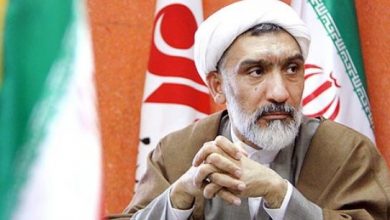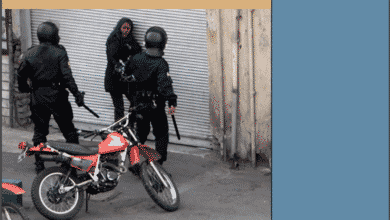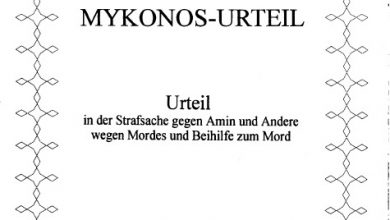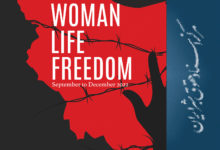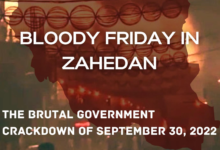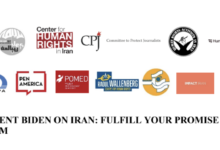IHRDC Releases Report: “Murder at Mykonos: Anatomy of a Political Assassination”
(New Haven, Connecticut, March 7, 2007) – In September 1992 agents of the Islamic Republic of Iran (IRI) murdered three leading members of the Democratic Party of Iranian Kurdistan (PDKI) in the Mykonos Restaurant in Berlin. The attack was one of a series of assassinations designed to intimidate and disrupt the activities of political opponents of the Islamic Republic. The Mykonos attacks provide a unique insight into this campaign, and this new IHRDC report is the first comprehensive, publicly available, account of the case to appear in either English or Farsi.
Since the revolution, the Government of the Islamic Republic of Iran (IRI) has demonstrated an unwavering commitment to exporting its revolution abroad. One aspect of this campaign has been a commitment to silencing critical voices in the Iranian exile community around the world. Since December 1979 Iranian intelligence agents have assassinated monarchist, nationalist and democratic activists in countries as diverse as the United States, Austria, Dubai, France and Turkey.
Iran is increasingly being held to account for its contempt for national sovereignty and foreign laws. In November 2006 an Argentinean federal judge issued an arrest warrant for eight IRI officials implicated in the bombing of a Jewish cultural center in Buenos Aires in July 1994 which killed 85 people. Those indicted include a former Iranian President Hojjatoleslam Akbar Hashemi Rafsanjani and Iran’s former Foreign Minister Ali Akbar Velayati. Arrest warrants for Iranian officials have also been issued by Switzerland in April 2006 for the murder of Professor Kazem Rajavi and by Austria in 1989 for the murder of another Kurdish leader, Abdol-Rahman Ghassemlou. Iran’s former Intelligence Minister and the mastermind behind the Mykonos murders, Hojjatoleslam Ali Fallahian, is currently the subject of no less than three separate international arrest warrants.
The Mykonos case has particular significance because it opens a window on a secret world. The trial of many, but sadly not all, of those involved elicited minute operational details about Iran’s program of political assassinations and about the kind of men recruited to carry it out. The operation vividly illustrates Iran’s use of terrorist proxies to pursue its targets where its own local resources are lacking. The testimony of a high-ranking former Iranian intelligence officer with direct experience of such operations provided a rare insight into the political direction behind such attacks. The unprecedented release of German intelligence materials laid bare for public examination the infrastructure that supported Iranian Intelligence operations in Western Europe.
The IHRDC has sifted through all this material, and has conducted fresh interviews and additional research of its own, to produce the first comprehensive, publicly available, report on the Mykonos case to appear in either English or Farsi. In doing so, it provides human rights campaigners inside Iran, and in the wider human rights community outside, with the materials they need to demonstrate the criminal resolve of the IRI to silence dissident voices no matter where in the world they are raised.
“The Islamic Republic of Iran has long been committed to eradicating centers of political opposition to the regime both at home and abroad. The calm professionalism of the Mykonos killers is emblematic of the ruthlessness with which the clerical establishment has sought to silence its opponents and this report exposes Iran’s murderous campaign for what it is – a gross violation of human rights,” said Tom Parker, Executive Director of the IHRDC.
Murder at Mykonos: Anatomy of a Political Assassination is currently available in English on IHRDC’s website at http://www.iranhrdc.org. A Farsi version of the report will be released in April. This report is the first in a planned series of three reports on Iran’s international campaign of political assassination. For further information please contact: Tom Parker, Executive Director Iran Human Rights Documentation Center (203) 772-2218 tparker@iranhrdc.org

